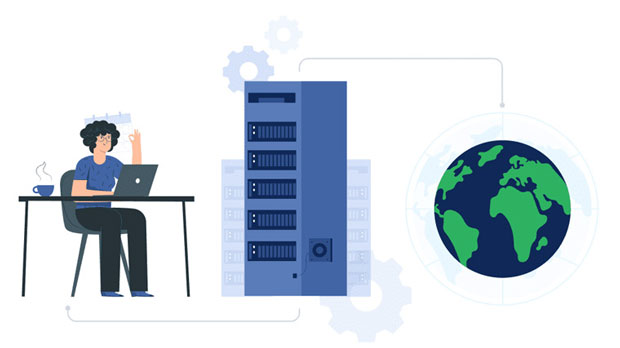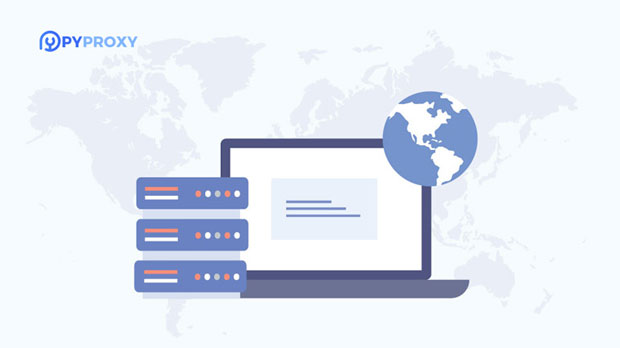In the world of web scraping, proxies play a crucial role in ensuring successful and seamless data collection from various websites. Among the different types of proxies, Residential socks5 proxies have become increasingly popular due to their enhanced anonymity and efficiency. They are ideal for bypassing restrictions such as IP blocking, CAPTCHA, and geo-blocking. This article will explore how Residential SOCKS5 proxies can be utilized effectively in web scraping projects, detailing their benefits, configuration, and real-world applications. Understanding how to implement these proxies is vital for anyone involved in data collection, especially when dealing with large-scale scraping operations. What are Residential SOCKS5 Proxies? residential proxies are IP addresses provided by real residential devices, like home routers. Unlike datacenter proxies, which are sourced from data centers, residential proxies are harder to detect as they resemble real user traffic. SOCKS5 is a specific type of proxy that is versatile and works with multiple protocols, including HTTP, HTTPS, and FTP. SOCKS5 proxies do not alter the request data, making them more flexible for a variety of applications, including web scraping.For web scraping projects, using Residential SOCKS5 proxies can improve performance by offering a more natural and secure connection. They help mitigate risks associated with scraping large volumes of data, such as getting blocked or encountering IP-related issues. These proxies are especially useful when scraping websites with strict anti-bot measures.Advantages of Using Residential SOCKS5 Proxies in Web Scraping1. Bypassing IP-based RestrictionsMany websites implement IP-based restrictions to prevent scraping, including rate limiting, IP blocking, and geographical blocking. By rotating residential IP addresses, you can disguise your true location and make it appear as though the requests are coming from different users. This allows for smoother and more efficient scraping without the risk of getting flagged or blocked by the target site.2. Avoiding CAPTCHA ChallengesCAPTCHAs are commonly employed by websites to differentiate between human users and bots. While traditional scraping methods may struggle with solving CAPTCHAs, using Residential SOCKS5 proxies provides a more human-like traffic pattern, reducing the chances of triggering these challenges. When combined with rotating IPs, this approach minimizes the risk of encountering CAPTCHAs, allowing for uninterrupted data extraction.3. Enhancing AnonymityAnonymity is a critical factor in web scraping. Residential proxies offer a higher level of anonymity compared to datacenter proxies because they appear as regular user IPs. This makes it difficult for websites to identify and block the source of the traffic. Furthermore, using SOCKS5 proxies allows for more granular control over your connection, such as handling DNS queries locally, which can further improve privacy and security during scraping operations.4. Better Performance in Geo-Targeted ScrapingWhen scraping data from region-specific websites, geo-targeting becomes essential. Some websites limit access based on the geographical location of the visitor's IP. Residential SOCKS5 proxies allow you to choose IPs from different regions, ensuring access to localized content. This feature is especially useful for scraping data from e-commerce platforms, travel websites, or localized news sites that implement geo-restrictions.Setting Up Residential SOCKS5 Proxies in a Web Scraping Project1. Selecting a Proxy ProviderBefore you can use Residential SOCKS5 proxies, you need to choose a reliable proxy provider. When selecting a provider, ensure they offer residential IPs with sufficient locations and bandwidth for your scraping needs. Additionally, verify that the provider supports SOCKS5 protocols to ensure compatibility with your scraping tools.2. Configuring socks5 proxy in Your Scraping ScriptOnce you have access to a Residential SOCKS5 proxy, the next step is to integrate it into your scraping script. Below is an example of how to configure SOCKS5 proxies using Python and the popular `requests` library:```pythonimport requestsfrom requests.auth import HTTPProxyAuth Define the proxy settingsproxies = { 'http': 'socks5://username:password@proxy_ip:port', 'https': 'socks5://username:password@proxy_ip:port'} Send a request using the proxyresponse = requests.get('http://proxy.com', proxies=proxies)print(response.text)```In this example, replace `'username'`, `'password'`, `'proxy_ip'`, and `'port'` with the appropriate credentials provided by your proxy provider. This code sends HTTP and HTTPS requests through the socks5 proxy server, ensuring that all requests are routed via the residential proxy.3. Rotating Proxies to Avoid DetectionFor large-scale scraping, it is advisable to rotate proxies regularly to minimize the risk of detection. This can be achieved by maintaining a list of proxies and cycling through them at set intervals. Proxy rotation ensures that each request appears to come from a different IP address, which significantly reduces the likelihood of triggering anti-scraping mechanisms.4. Implementing Error Handling and Retrying RequestsIn web scraping, errors are inevitable. To ensure your project runs smoothly, it is essential to implement error handling and retry logic in case a request fails. Some proxies may become unavailable, or the target website might temporarily block a specific IP. By adding retry logic and using multiple proxies, your scraping project can recover from these errors and continue to function without significant downtime.```pythonimport timeimport randomdef get_data_with_retries(url, retries=3): for attempt in range(retries): try: response = requests.get(url, proxies=proxies) return response.text except requests.exceptions.RequestException as e: print(f"Error: {e}") if attempt < retries - 1: time.sleep(random.uniform(1, 3)) Wait before retrying else: raise Exception("Max retries reached")```This function attempts to retrieve data from the target URL, retrying if necessary, with a delay between attempts to avoid overloading the target server.Real-World Applications of Residential SOCKS5 Proxies in Web Scraping1. E-commerce Price MonitoringOne of the most common use cases for Residential SOCKS5 proxies in web scraping is e-commerce price monitoring. By using proxies to scrape product prices from various e-commerce websites, businesses can track competitors' pricing strategies and adjust their own accordingly. Residential proxies are particularly useful here as they prevent the scraping process from being blocked by anti-bot systems.2. Social Media Data CollectionAnother significant application of Residential SOCKS5 proxies is the collection of social media data. Social platforms like Facebook, Instagram, and Twitter have strict anti-scraping measures in place. Using residential IPs allows scrapers to bypass these restrictions, enabling the collection of valuable insights from social media profiles, posts, and trends.3. Market ResearchMarket research firms often rely on web scraping to collect data from a variety of online sources. By using Residential SOCKS5 proxies, they can gather data from global sources, ensuring that their research is not skewed by geographic IP-based restrictions. Proxies allow for large-scale scraping across different regions, providing a comprehensive dataset for analysis.ConclusionResidential SOCKS5 proxies offer significant advantages for web scraping projects, especially in terms of anonymity, IP rotation, and bypassing restrictions. By carefully selecting a reliable proxy provider, configuring the proxies within your scraping script, and rotating them appropriately, you can ensure a smooth and efficient data collection process. Whether you're monitoring e-commerce prices, gathering social media insights, or conducting market research, Residential SOCKS5 proxies are an indispensable tool for large-scale scraping operations.
Jan 14, 2025





























































